“How much are Magic cards worth?” “Which Magic cards are worth the most money?” “What makes Magic cards so expensive?”
Believe it or not, these are the most-asked Magic: The Gathering questions on the internet. As experienced players dive deeper into Magic, we may lose sight of how unusual and unpredictable the price tags are on rare and staple cards. But new Magic players — and returning players who might have dabbled in their youth — will often latch onto these fiscal questions.

The secondary market value of cards serves as an easy “bridge” from an outsider’s view of the game to a more informed one. Finding out which cards are the most valuable also tells you which cards are most important, and discovering what makes those cards worth their asking price is an easy way to understand which concepts are powerful and universal to the game of Magic.
Of course, it would be inefficient to use this space to list the top 10 eye-wateringly expensive cards when there’s hundreds more worth money that you might not even realize you have! So rather than catalogue every card, I’ll explain the different categories of money cards, their approximate range of values, why they are valuable, and how likely you are to stumble across some in your collection.
A-B-U: THE GENUINE ARTICLE
Okay, let’s start with the real deal! The bona fide money cards. These are the famous prizes, the examples people probably think of when they imagine stupendously expensive Magic prices.
ABU is shorthand for Limited Edition Alpha, Limited Edition Beta, and Unlimited: the first three print runs of the original Magic core set created back in 1993. All three printings contain the same set of cards, with a few notable exceptions (Alpha is missing Circle of Protection: Black and Volcanic Island due to printing errors).
If you’re lucky enough to have these cards, you can tell them apart by the outer borders. Alpha and Beta cards have black borders, with Alpha cards having more rounded corners than subsequent sets. Unlimited cards are white-bordered instead, with brighter, bolder colors than the later (slightly different) Revised core set.

Each card from Alpha or Beta is worth some money, especially those that are powerful in-game or that have special nostalgic value, like fan-favorites Serra Angel and Shivan Dragon. Even the cheapest have price tags like Guardian Angel (Alpha printing = $6.61, Beta = $3.62, Unlimited =$0.37). The deep value of Alpha and Beta is due to a combination of historical significance and scarcity.

The full print run of Alpha was only 2.6 million cards. Beta, rushed to the printers after the former sold out, totaled 7.8 million. Unlimited was ordered after Wizards of the Coast realized they had a success on their hands, dwarfing the first two printings at 40 million cards!
As the name implies, Unlimited was intentionally positioned as less valuable and collectible, but it is still notable today for containing certain cards — 35 in all — which were removed from later printings of the core set for being too powerful or otherwise problematic. These cards include the “Power Nine” — Magic’s rarest and most powerful spells — as well as other highlights which would never be reprinted again.
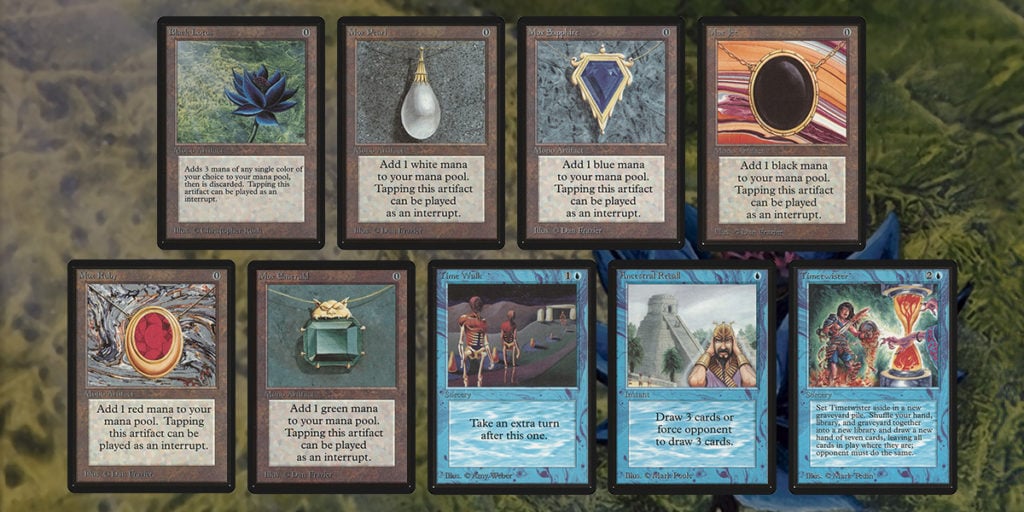
Obviously, these exclusives command an impressive price even in their Unlimited printings. But keep the quality of the specific cards you’re dealing with in mind; it matters more for ABU than anywhere else!
THE RESERVED LIST: VALUE GUARANTEED
The next most valuable category of cards belong to the other sets printed between 1993 and 1996. The size of Magic print runs continued to increase after Unlimited, with releases from mid-1994 onwards being large enough that only the hottest cards would hold significant long-term value. Then in mid-1995, Wizards released Chronicles, a “best-of” set which reprinted many rare cards from older, more scarce expansion sets with a white border… and a massive print run.
While the intent of Chronicles was noble (allowing new players access to previously-released cards at a fair price), there was a tremendous negative reaction from established players and collectors, who threatened to abandon Magic if Wizards destroyed the value of their collections with reprints. Wizards responded by creating a lengthy register of rare cards from existing sets and published it with a specific promise to never reprint those cards, nor to print similar cards which would supersede them in game.
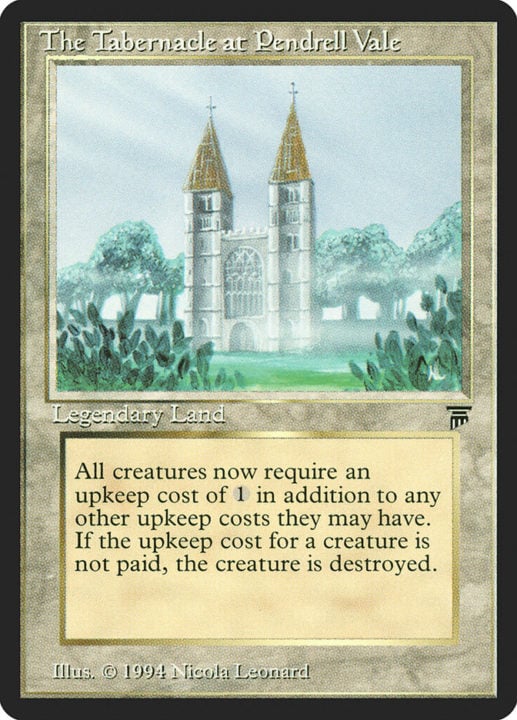
This “Reserved List” has loomed over the hobby since its inception in March 1996. Held to be legally binding and devastating should Wizards ever alter or rescind it, the List guarantees artificial scarcity for each of its 571 cards. This has obviously led to significant, consistent price growth, as well as blunt attempts at market manipulation. Almost half the cards on the Reserved list are worth upwards of $5; of those, 83 are worth more than $50, and a handful of them, much more.
Aside from the ABU-exclusive highlights mentioned above, this shortlist includes all-star cards from Magic’s first few expansion sets: The Tabernacle at Pendrell Vale, Bazaar of Baghdad, Library of Alexandria, Mishra’s Workshop, Candelabra of Tawnos, Moat, The Abyss and Chains of Mephistopheles.
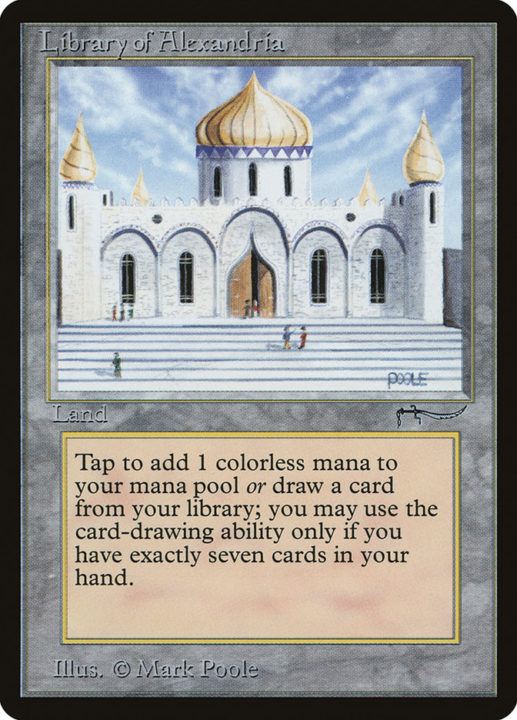
Another notable find that hangs around $1000 is the iconic Juzam Djinn. Powerful in its day, the monster hasn’t quite kept up with the pace of tournament decks. But it is quite important to fans of “Old School” tournaments: fan-run events which only allow cards printed in the first few years of Magic. (This also explains the demand for random Alpha and Beta cards.)
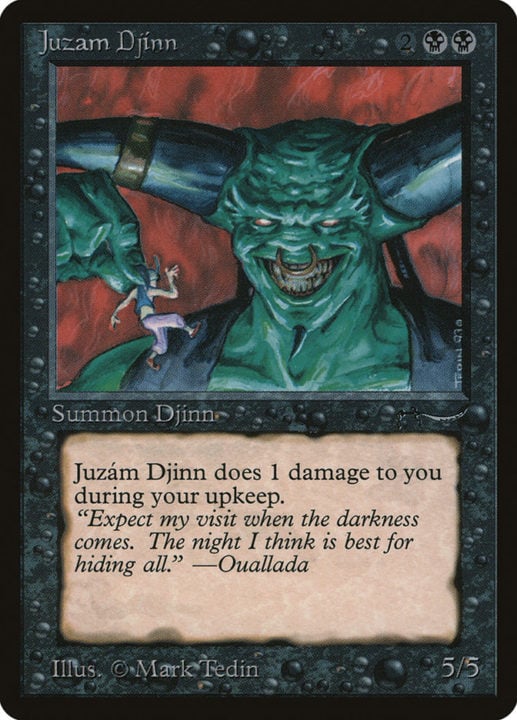
The last notable set of cards from the Reserved List are the Dual Lands (or “Original Duals”). These powerful lands are an upgrade for almost any deck in Magic, and thus are in much higher demand than most Reserved List cards for tournament play.
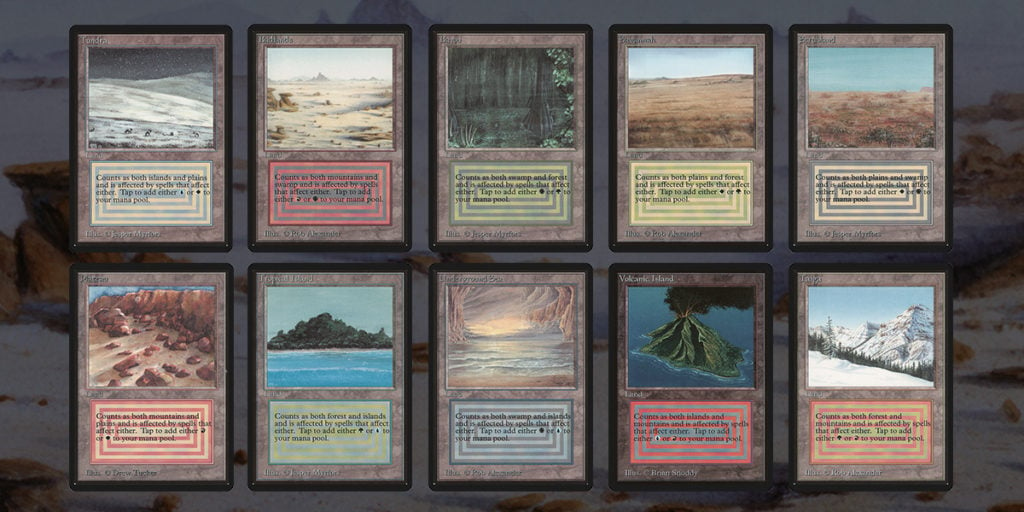
Despite being printed in four different sets, this keeps the price of Dual Lands in step with Reserved List cards with much smaller print runs. Their recognizable, black-bordered printings from Alpha and Beta command even better prices!
WILDCARDS: PROMOS AND SUPPLEMENTARY PRODUCTS
While Wizards did add a few more sets to the Reserved List after its creation, the List hasn’t grown since 2002. A fluctuating tournament metagame, generous modern print runs and the threat of sudden reprintings mean that collecting cards from this millennium is closer to day-trading than building a stable portfolio. The card prices and margins also tend to be smaller, although availability allows for dedicated speculators to make up for that by trading at scale online.
Opportunities for really big card prices now come from special promotional cards and “supplemental products” released in smaller print runs outside of the regular card sets. Of the promo cards worth over $100, the majority are either special foil reprints issued as rewards to tournament judges for their work on the game, or extremely limited promos sold exclusively at San Diego ComicCon.

Miscut or misprinted cards are also quite impressively valuable within a niche subcommunity who collect them. Prices are hard to gauge and vary wildly based on individual taste, more like modern art than Magic cards in some ways. In the most famous and mind-boggling example, a Dutch player who opened a preconstructed deck in 2019 to find all 100 cards had been uniquely misprinted has been auctioning them off for an average of $2150 per card.
The supplemental set known as Portal: Three Kingdoms holds an ABU-like high price on every card from common to rare due to niche availability. Printed to introduce Chinese audiences to the game, the cards feature characters from the Romance of the Three Kingdoms. English versions of these cards were printed in very limited runs for sale exclusively in Australia and New Zealand, making even common cards into notable collector pieces and pushing rares up to hundreds of dollars.
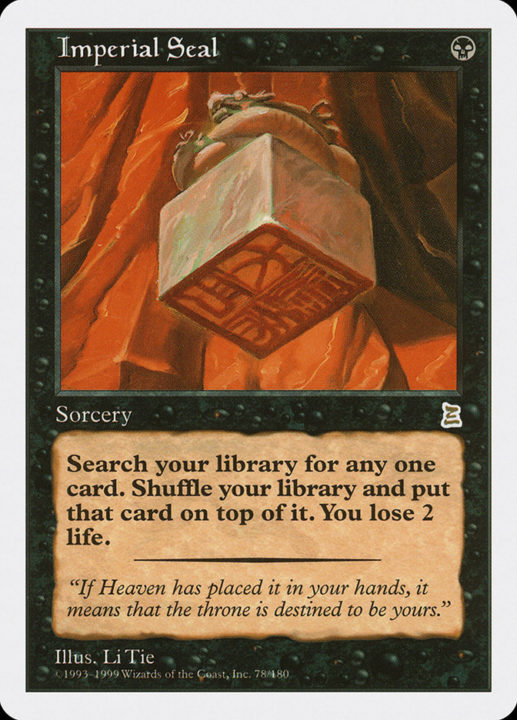
NOT-SO-BASIC LANDS
It’s also worth singling out the “Guru Lands”: a cycle of basic lands adorned with matching, striking and distinctive artwork featuring sundial patterns. These were handed out as rewards through the “Guru” program to players who mentored novices to the game, and are now the most prestigious versions available of Magic’s most ubiquitous cards.
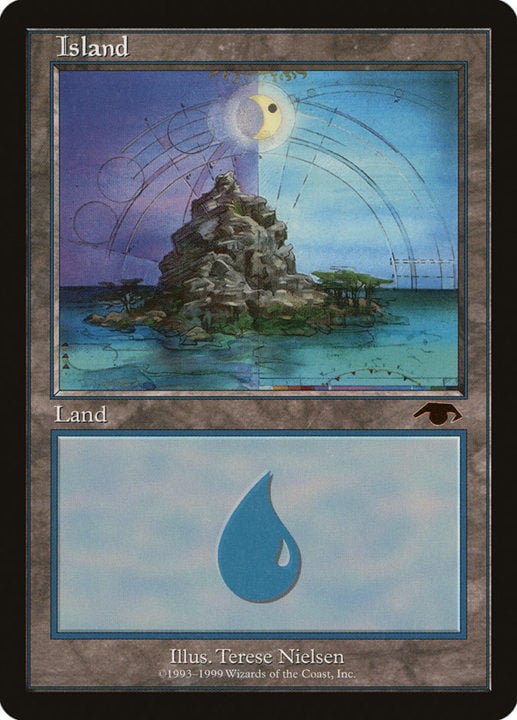
Other notable basics include the “Land Program” series, featuring artwork depicting real-world landmarks from around Europe and Asia ($20-$50 each) and Judge foil full-art basics. Certain foil basic lands can also be worth a shocking amount, especially those which feature foiling on top of the old-style card frame — a combination which was only present for a couple of years at the turn of the millennium.

A special mention must go to the card Mana Crypt, which is a poster child for valuable promos. First released exclusively in a bundle with a Magic tie-in novel, the card found increasing popularity in the burgeoning Commander format and became incredibly pricey. It managed to receive two more promo reprints before finally sneaking into booster packs in the Eternal Masters and Mystery Booster supplemental sets. Those versions are worth a cool $140, with the promos all fetching several hundred each.
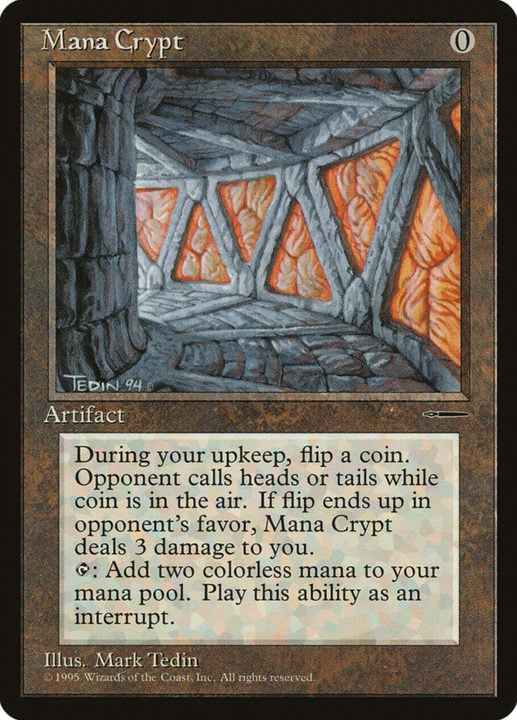
This combination of demand and rarity makes Mana Crypt the 4th-most-valuable card outside the Reserved List, behind two cards from Portal: Three Kingdoms (Imperial Seal and Zodiac Dragon) and one (Grim Tutor) which was exclusive to a particular 1999 starter deck.
EXPEDITIONS, MASTERPIECES, AND INVOCATIONS
In the last five years, Wizards experimented with a different method of distributing high-end promo reprints: inserting them at random into booster boxes of current sets. Battle for Zendikar featured Expeditions — a set of foil, full-art promos featuring the most valuable non-Reserved land cards in Magic, each with new artwork. They were hugely sought after, with most approaching $100 in price and some reaching several hundred dollars.
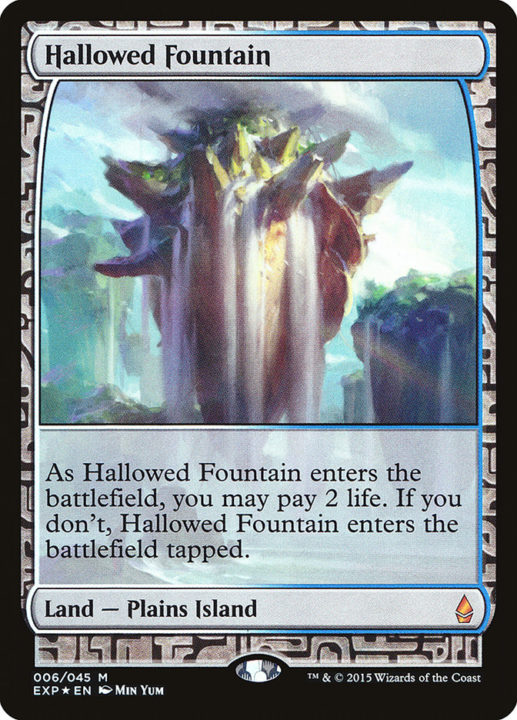
Kaladesh followed up with the Masterpiece series, which gave a different but equally unique foil reprint treatment to some of the game’s most famous artifact cards. Thirteen break the $100 mark and none are below $20, even those which were reprints from Kaladesh itself.

Finally, Amonkhet featured the Invocation promos. This selection of cards lacked a strong theme, and the special visual presentation was not as well-received, as the faux-hieroglyphic font was very difficult to read. As such, their average price is lower — but only slightly.
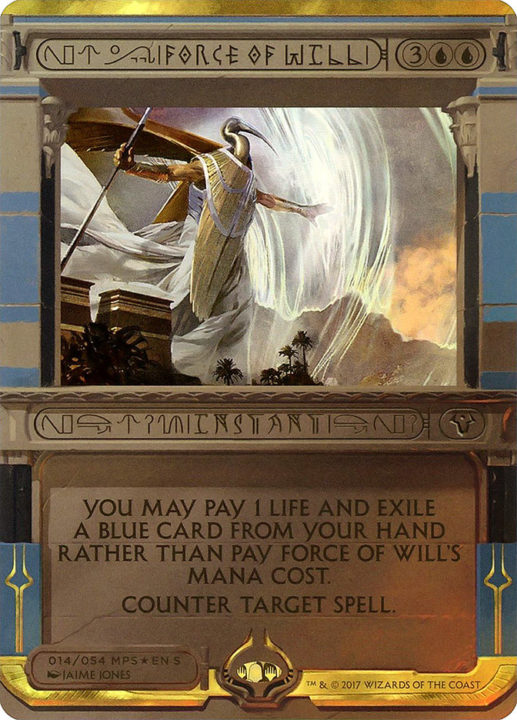
COLLECTING MY THOUGHTS
While many fans enjoy Magic as a game first and foremost, the collectible appeal of the cards translates well to a broad audience. Stories of super-valuable cards entice and entertain newcomers and tempt old-timers with the idea that somewhere under their bed could lurk hundreds of thousands in cardboard credit. For those looking to extract the most value from their past collection — or even buy their way back into the game — the secondary market is an essential pillar of the Magic hobby.
I would recommend the free Delver Lens app or a similar collection scanning app for any large-scale Magic trading. These let you use your phone camera like a barcode scanner, and will automatically identify your cards by name (and in many cases, set) before giving you up-to-date pricing guidelines. You can then export your sell list or buy list and email it to one of the large online vendors like CardKingdom.com.
It’s the fastest way to arm yourself with real information about what you might have to sell or buy without having to learn the history and culture of Magic. But if you’re starting to get curious about that part after all, then watch this space. Next week, I’ll help address some of the most misunderstood and vital decisions made at the beginning of every Magic career!

Tom’s fate was sealed in 7th grade when his friend lent him a pile of commons to play Magic. He quickly picked up Boros and Orzhov decks in Ravnica block and has remained a staunch white magician ever since. A fan of all Constructed formats, he enjoys studying the history of the tournament meta. He specializes in midrange decks, especially Death & Taxes and Martyr Proc. One day, he swears he will win an MCQ with Evershrike. Ask him how at @AWanderingBard, or watch him stream Magic at twitch.tv/TheWanderingBard.

